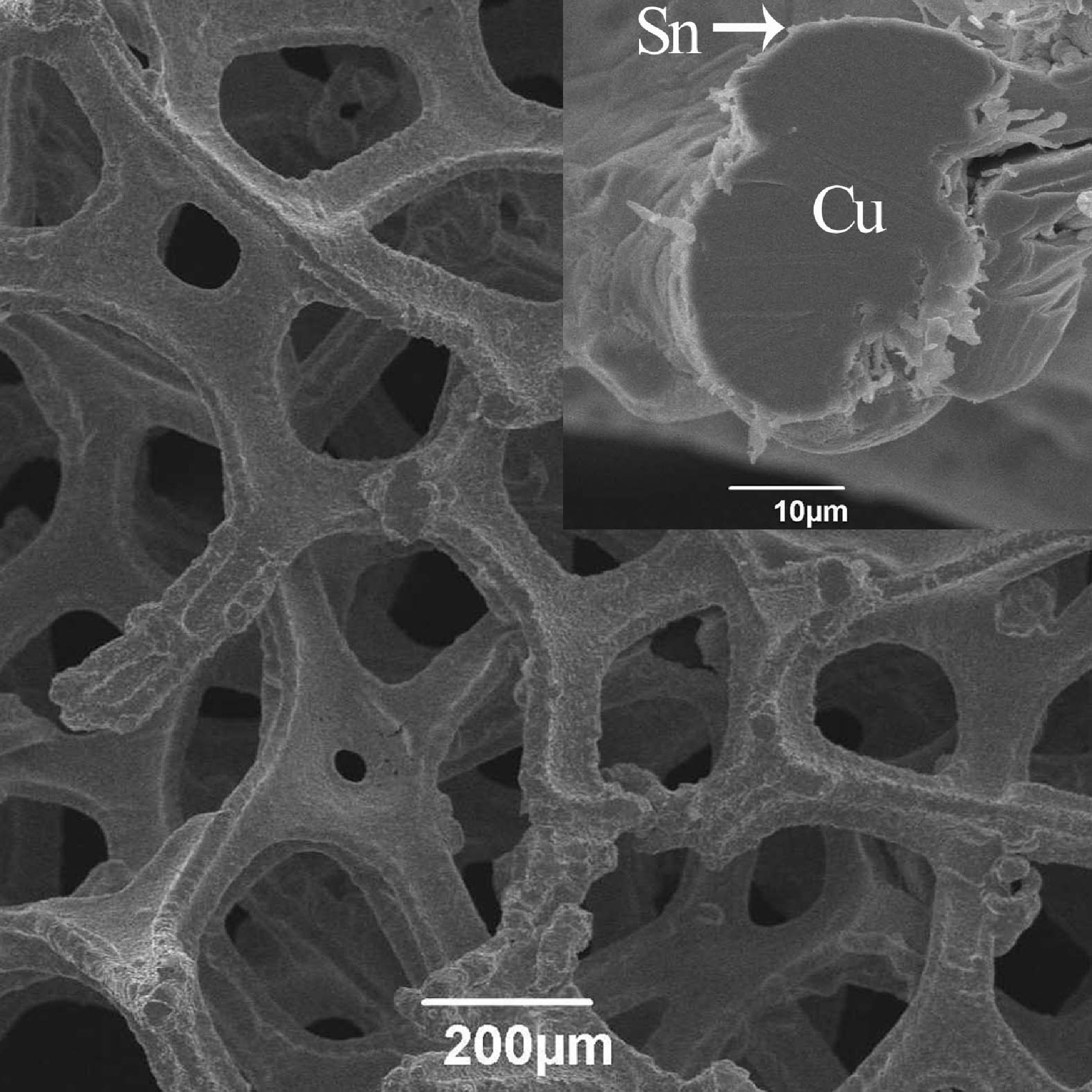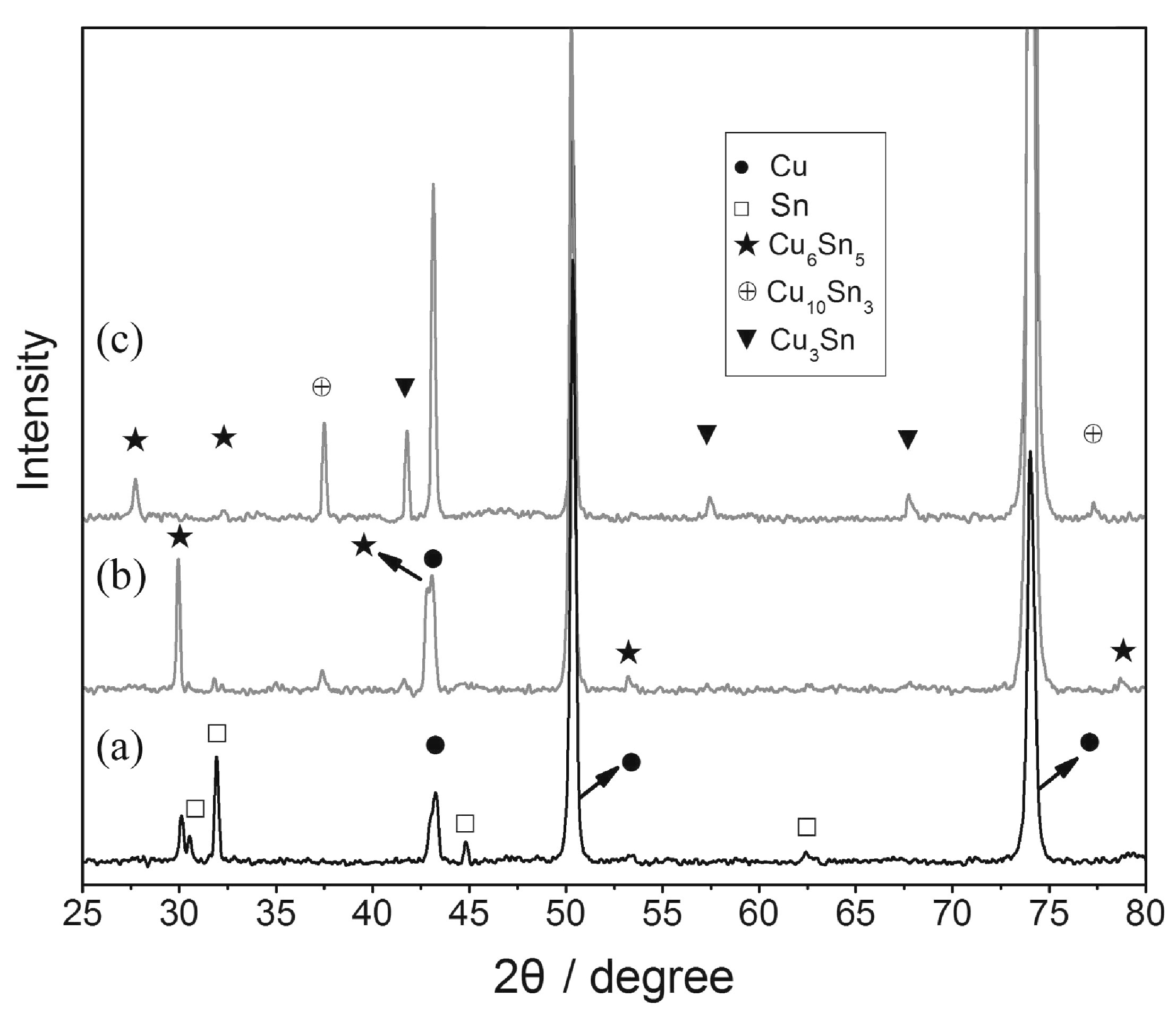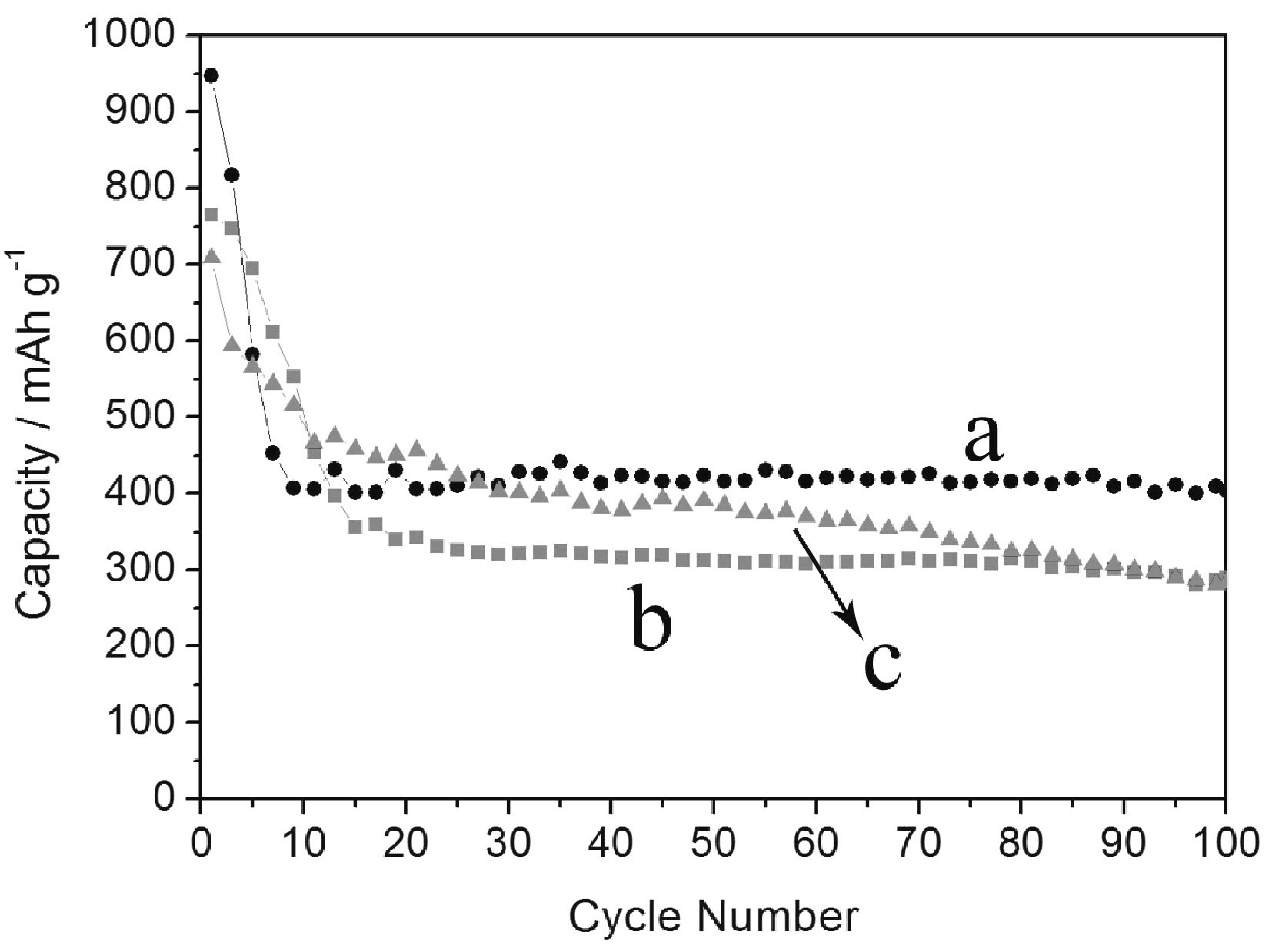Preparation method of three-dimensional porous tin-copper alloy cathode materials for lithium ion battery
A lithium-ion battery, three-dimensional porous technology, applied in the field of electrochemistry, can solve the problem of insufficient stability of the porous structure, and achieve the effect of facilitating large-scale production, improving cycle performance, and easy large-scale production
- Summary
- Abstract
- Description
- Claims
- Application Information
AI Technical Summary
Problems solved by technology
Method used
Image
Examples
Embodiment 1
[0024] 1. Ultrasonic cleaning the copper foam with acetone and dilute hydrochloric acid respectively to remove oil and scale.
[0025] 2. Immerse the pre-treated foamed copper in the electroless tin plating solution, and deposit a layer of off-white tin plating on the foamed copper under room temperature ultrasonic conditions.
[0026] 3. Put the tin-coated copper foam in a vacuum oven at 150°C for 2 hours. Under high temperature conditions, the tin-copper alloy phase is formed due to the atomic diffusion between tin and copper, thereby preparing a three-dimensional porous tin-copper alloy anode.
[0027] 4. Before being assembled into a battery, the three-dimensional porous tin-copper alloy negative electrode is pressed into a thin sheet under a pressure of 3Mpa, and then battery assembly and performance testing are performed.
[0028] Result Characterization:
[0029] a. by attached figure 1 It can be seen that the copper foam is a three-dimensional porous structure with ...
Embodiment 2
[0033] 1. Ultrasonic cleaning the copper foam with acetone and dilute hydrochloric acid respectively to remove oil and scale.
[0034] 2. Immerse the pretreated copper foam in the electroless tin plating solution, and keep it ultrasonic for 3 minutes at room temperature, and deposit a layer of off-white tin plating on the foam copper.
[0035]3. Press the non-heat-treated tin-coated copper foam into a thin sheet under a pressure of 3Mpa, and then perform battery assembly and performance testing.
[0036] Result Characterization:
[0037] a. by attached figure 2 a It can be seen that for the non-heat-treated tin-coated copper foam, in addition to the diffraction peaks of copper as the substrate, there are also diffraction peaks of Sn and Cu 6 sn 5 Alloy phase diffraction peaks, indicating that the electrode is three-dimensional porous Sn-Cu 6 sn 5 composite electrode.
[0038] b. By attached image 3 b It can be seen that the three-dimensional porous Sn-Cu obtained unde...
Embodiment 3
[0040] 1. Ultrasonic cleaning the copper foam with acetone and dilute hydrochloric acid respectively to remove oil and scale.
[0041] 2. Immerse the pretreated copper foam in the electroless tin plating solution, and keep it ultrasonic for 3 minutes at room temperature, and deposit a layer of off-white tin plating on the foam copper.
[0042] 3. Place the tin-coated copper foam in a vacuum oven at 200°C for 24 hours. Under high temperature conditions, a tin-copper alloy phase is formed due to atomic diffusion between tin and copper. Thus, a three-dimensional porous tin-copper alloy anode was prepared.
[0043] 4. The three-dimensional porous tin-copper alloy negative electrode was pressed into a thin sheet under a pressure of 3Mpa for battery assembly and performance testing.
[0044] Result Characterization:
[0045] a. by attached figure 2 c It can be seen that after heat treatment at 200°C for 24 hours, except for the diffraction peak of copper as the substrate, it is...
PUM
| Property | Measurement | Unit |
|---|---|---|
| pore size | aaaaa | aaaaa |
| pore size | aaaaa | aaaaa |
| thickness | aaaaa | aaaaa |
Abstract
Description
Claims
Application Information
 Login to View More
Login to View More - R&D
- Intellectual Property
- Life Sciences
- Materials
- Tech Scout
- Unparalleled Data Quality
- Higher Quality Content
- 60% Fewer Hallucinations
Browse by: Latest US Patents, China's latest patents, Technical Efficacy Thesaurus, Application Domain, Technology Topic, Popular Technical Reports.
© 2025 PatSnap. All rights reserved.Legal|Privacy policy|Modern Slavery Act Transparency Statement|Sitemap|About US| Contact US: help@patsnap.com



